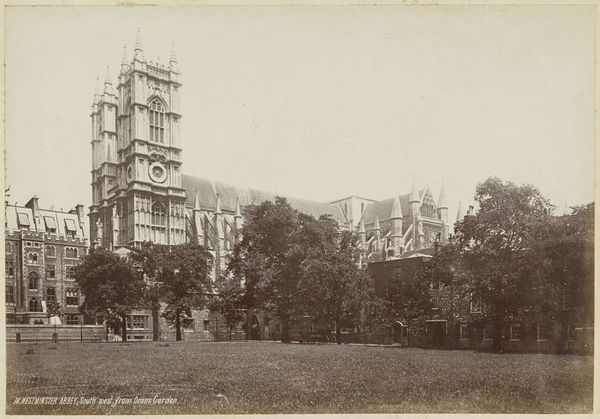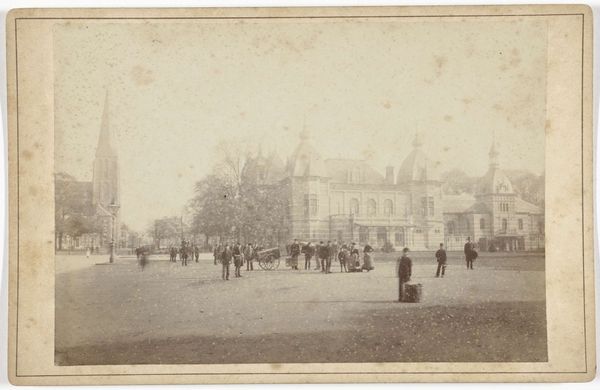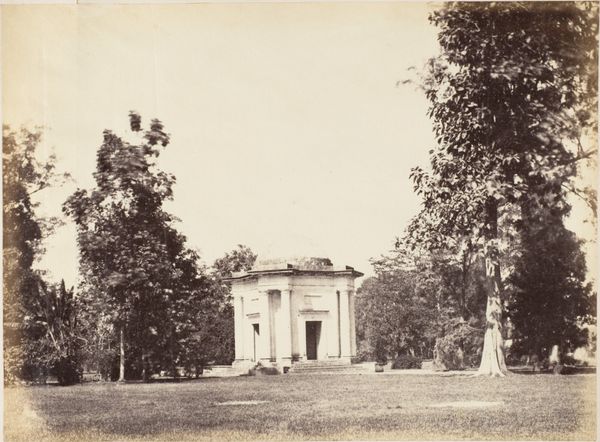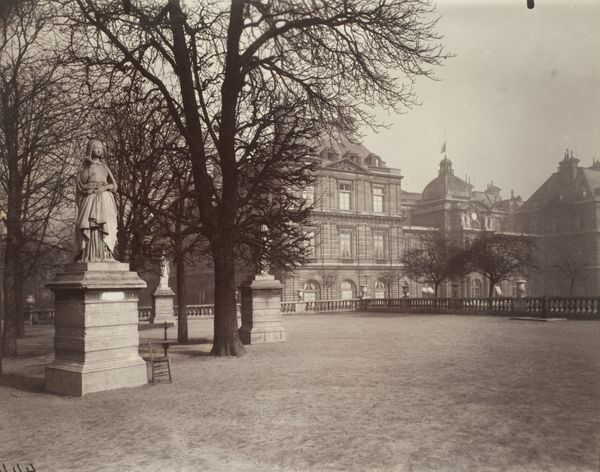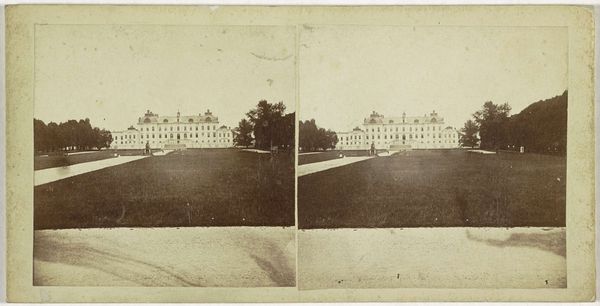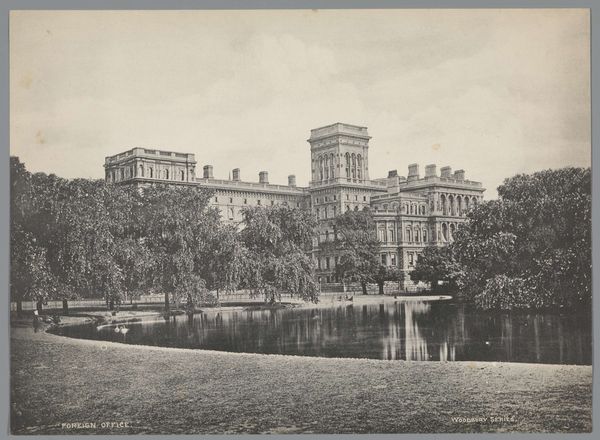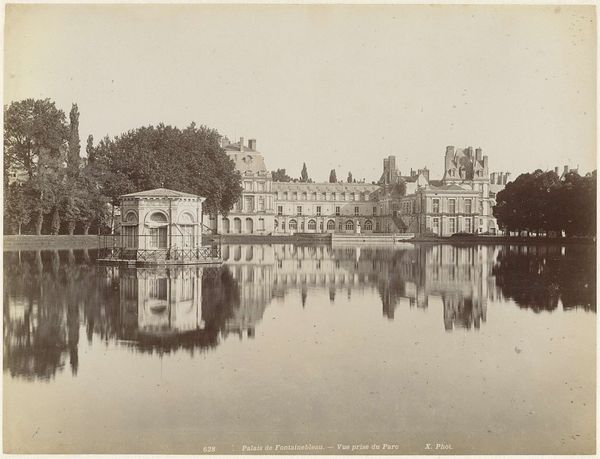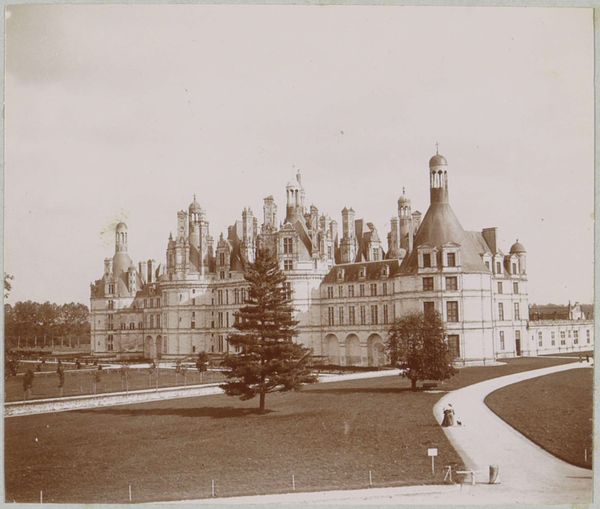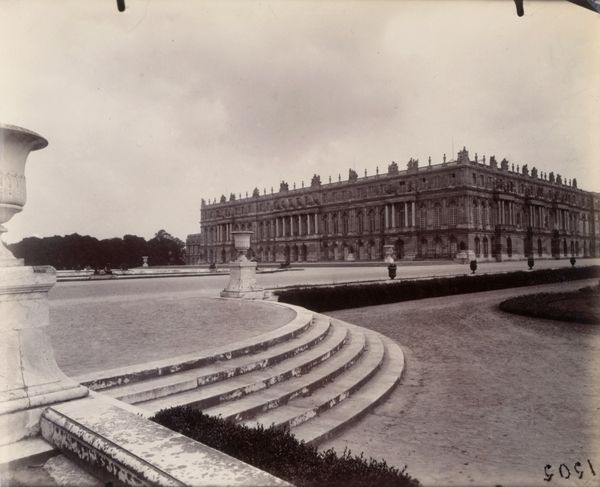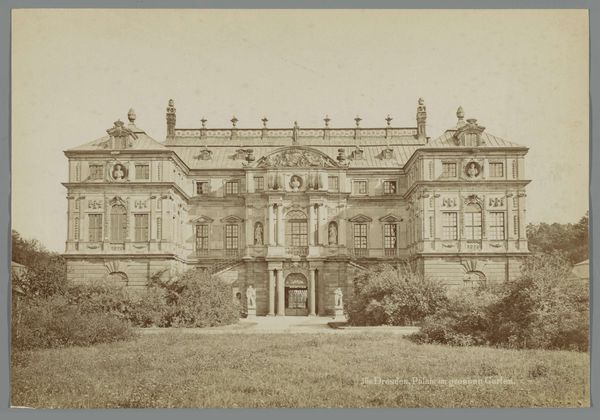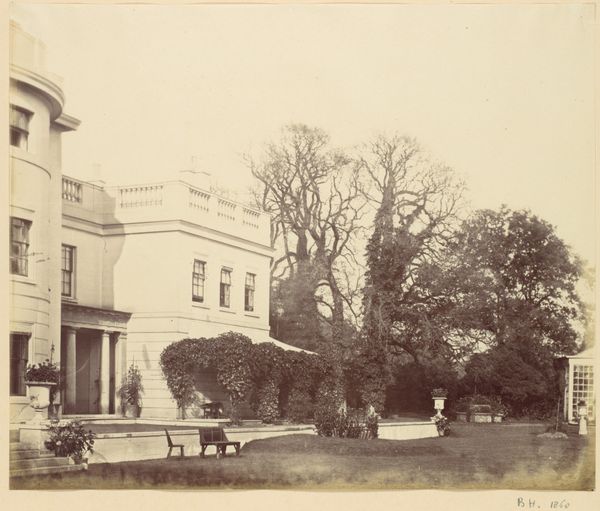
British memorial in Kanpur, commemorating the Bibighar massacre, Uttar Pradesh, India 1864 - 1866
0:00
0:00
print, photography, gelatin-silver-print, architecture
# print
#
landscape
#
outdoor photograph
#
photography
#
historical photography
#
gelatin-silver-print
#
monochrome photography
#
architecture
Dimensions: height 190 mm, width 302 mm, height 344 mm, width 470 mm
Copyright: Rijks Museum: Open Domain
Curator: This photograph by Samuel Bourne, taken between 1864 and 1866, documents the British memorial in Kanpur, India, built to commemorate the Bibighar massacre. It’s a gelatin silver print that captures the architectural structure within a meticulously planned landscape. Editor: My initial reaction is one of unease. The perfectly manicured grounds juxtaposed with that almost gothic structure in the background gives me a sense of colonial imposition and a somewhat staged tranquility. Curator: It's important to remember the context in which Bourne was working. As a commercial photographer in India during the British Raj, he was often commissioned to document British achievements and infrastructure. This image serves as a potent symbol of imperial power and memory. The very act of constructing such a memorial and then photographing it speaks to the public role of art in shaping narratives of dominance. Editor: Absolutely. The composition is so deliberate—the positioning of the building, the trees arranged like sentinels, even the children in the foreground seem placed to soften the narrative. Yet, the history of the massacre, a horrific event during the 1857 uprising, simmers beneath the surface. How do you think this image functioned in Britain at the time? Curator: It likely served to reinforce the narrative of British heroism and the need for firm rule in India. Images like these helped justify the colonial project by highlighting both the order and civilization brought by the British and the perceived barbarity that necessitated their intervention. We should also be very conscious of how such visuals play into racial and national identities. Editor: The children, seemingly local, positioned almost as observers... their presence raises questions about whose perspective is privileged here. It is a striking example of how photography, seemingly objective, can be deeply implicated in the politics of representation. Curator: Indeed, and how the very act of memorialization can be an act of political messaging. This image serves as a stark reminder of the power dynamics inherent in colonial representation and the need to critically examine the historical narratives they perpetuate. Editor: It's a visually arresting yet deeply unsettling photograph. Thank you for illuminating the historical context. It gives one so much food for thought concerning not only photographic history, but also colonial politics.
Comments
No comments
Be the first to comment and join the conversation on the ultimate creative platform.
